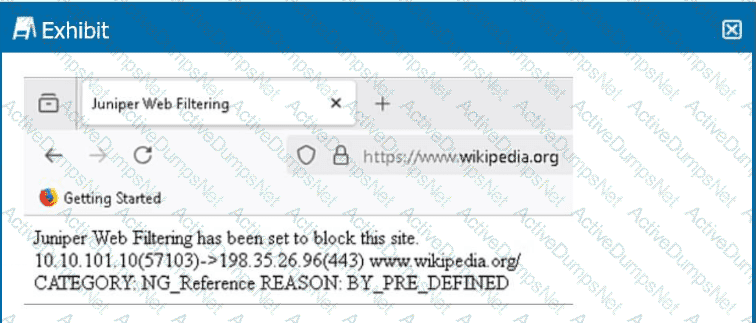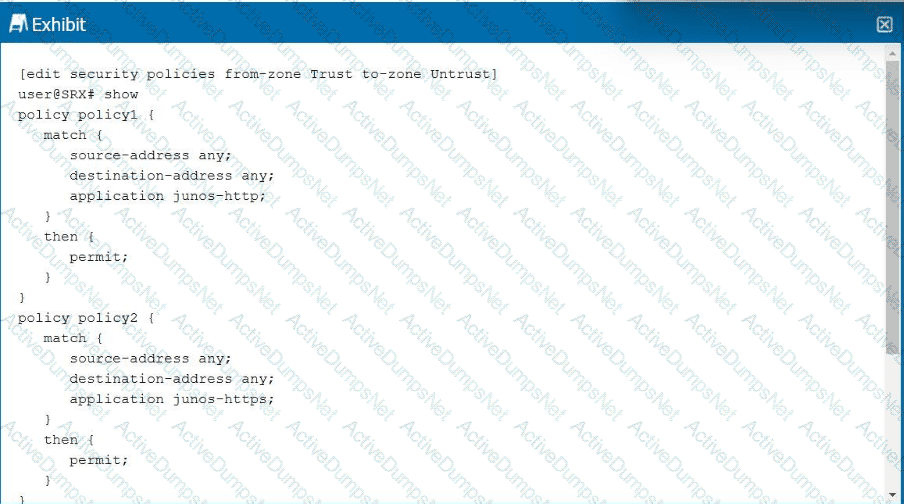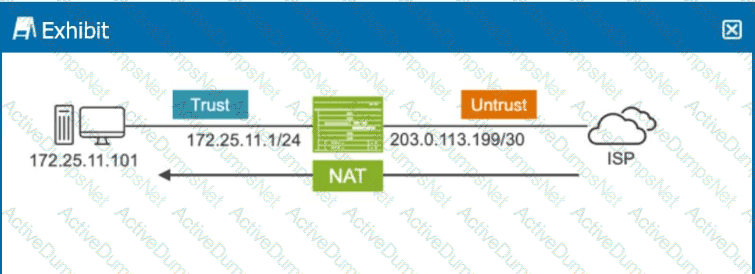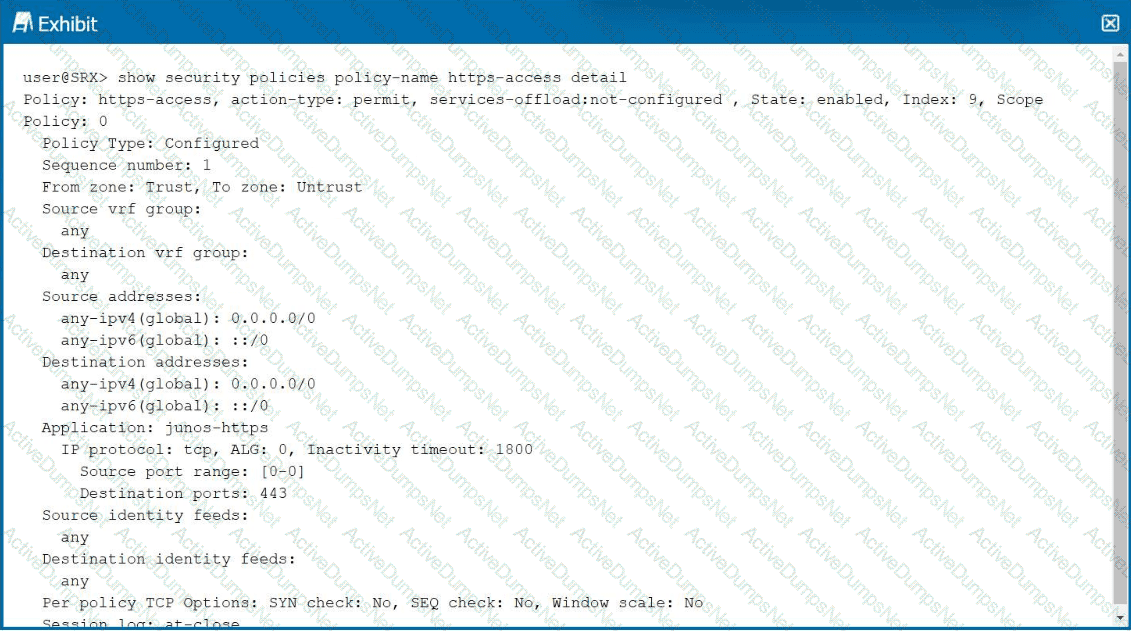You have a situation where legitimate traffic is incorrectly identified as malicious by your screen options.
In this scenario, what should you do?
Click the Exhibit button.

Referring to the exhibit, which two statements are correct? (Choose two.)
Which statement is correct about exception traffic?
What is the purpose of assigning logical interfaces to separate security zones in Junos OS?
Click the Exhibit button.


Referring to the exhibit, which statement is correct?
Which two statements about the host-inbound-traffic parameter in a zone configuration are correct? (Choose two.)
Which two statements about management functional zones are correct? (Choose two.)
Click the Exhibit button.

You must ensure that sessions can only be established from the external device.
Referring to the exhibit, which type of NAT is being performed?
What are two system-defined zones created on the SRX Series Firewalls? (Choose two.)
Which two statements are correct about NAT and security policy processing? (Choose two.)
What is transit traffic in the Junos OS?
Your manager asks you to verify when your antivirus definitions were last updated on your SRX Series Firewall.
Which operational mode command allows you to see this information?
You want to use Avira Antivirus.
Which two actions should you perform to satisfy this requirement? (Choose two.)
Click the Exhibit button.

Referring to the exhibit, which two statements are correct? (Choose two.)
Your company is acquiring a smaller company that uses the same private address range that your company currently uses in its North America division. You have a limited number of public IP addresses to use for the acquisition. You want to allow the new acquisition's users to connect to the existing services in North America.
Which two features would you enable on your SRX Series Firewall to accomplish this task? (Choose two.)
Which two statements about destination NAT are correct? (Choose two.)
Which two statements are correct about security zones? (Choose two.)
Which two statements are correct about unified security policies? (Choose two.)
Which UI enables you to manage, monitor, and maintain multiple firewalls using a single interface?